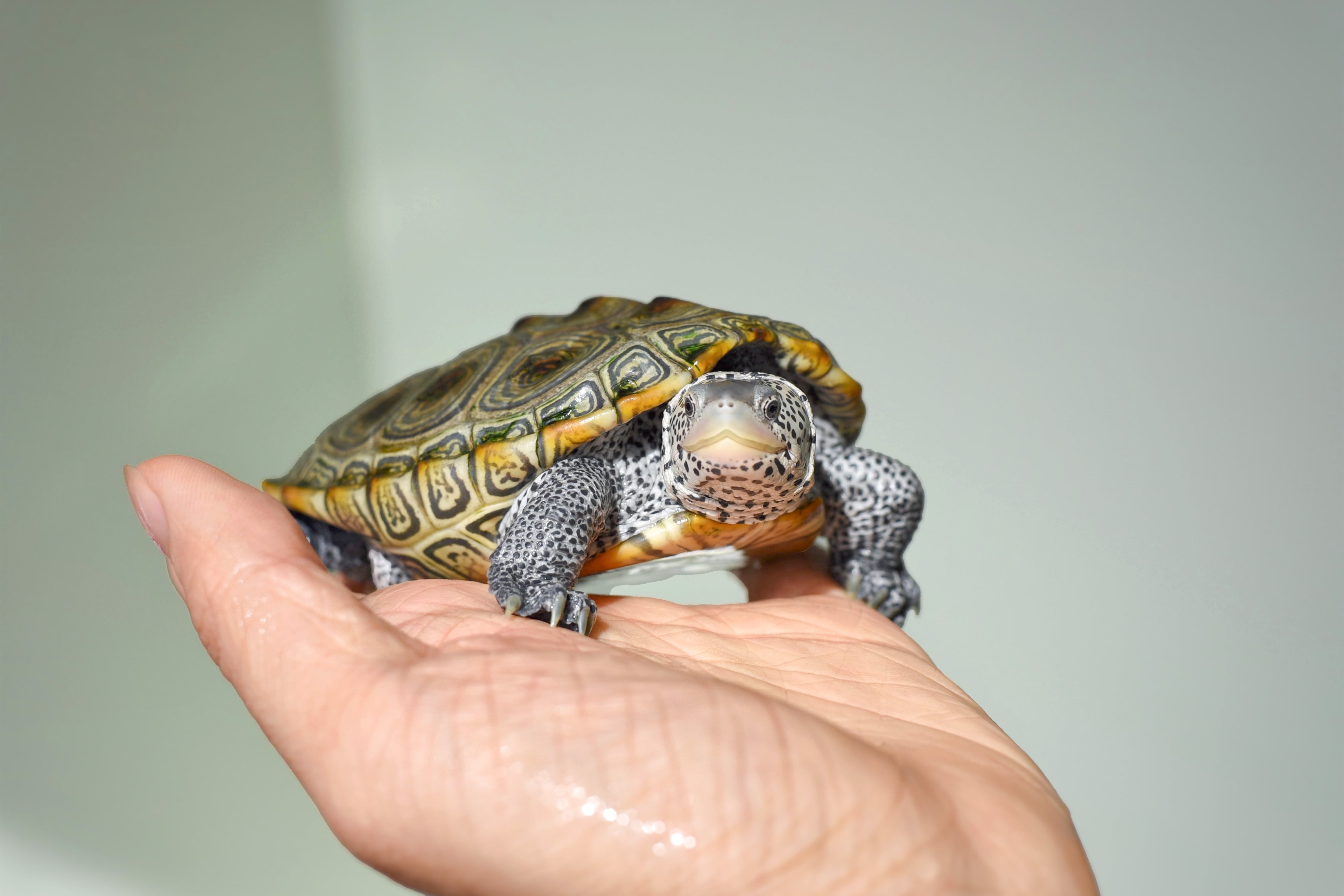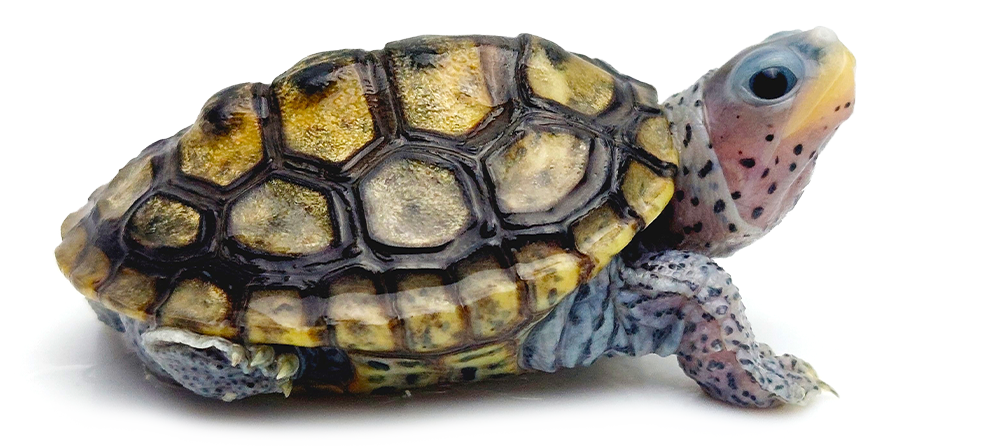Diamondback Terrapin

Iconic Turtles From America
Diamondback terrapins are iconic turtles from the northeastern United States. They are named after the diamond-shaped plates on their shells, known as scutes. They have distinct, attention-grabbing skin that can range in color.
On average, females grow to 8 inches, and males to 5 inches. Like other turtles, diamondback terrapins have a long lifespan and on average live 25-40 years, so pet owners must be ready for a longtime commitment. Diamondback terrapins are generally docile pets. They are very social creatures with their own species, so pet owners might consider more than one for their habitat!
Native Habitat
Diamondback terrapins are native to North America, primarily found along the Atlantic and Gulf coasts. They inhabit brackish water habitats, including marshes, estuaries, and tidal creeks. Diamondback terrapins remain an iconic species in coastal ecosystems and are valued for their ecological role and cultural significance. They are protected by various federal, state, and local laws, so check your local laws regarding their ownership before purchasing one.
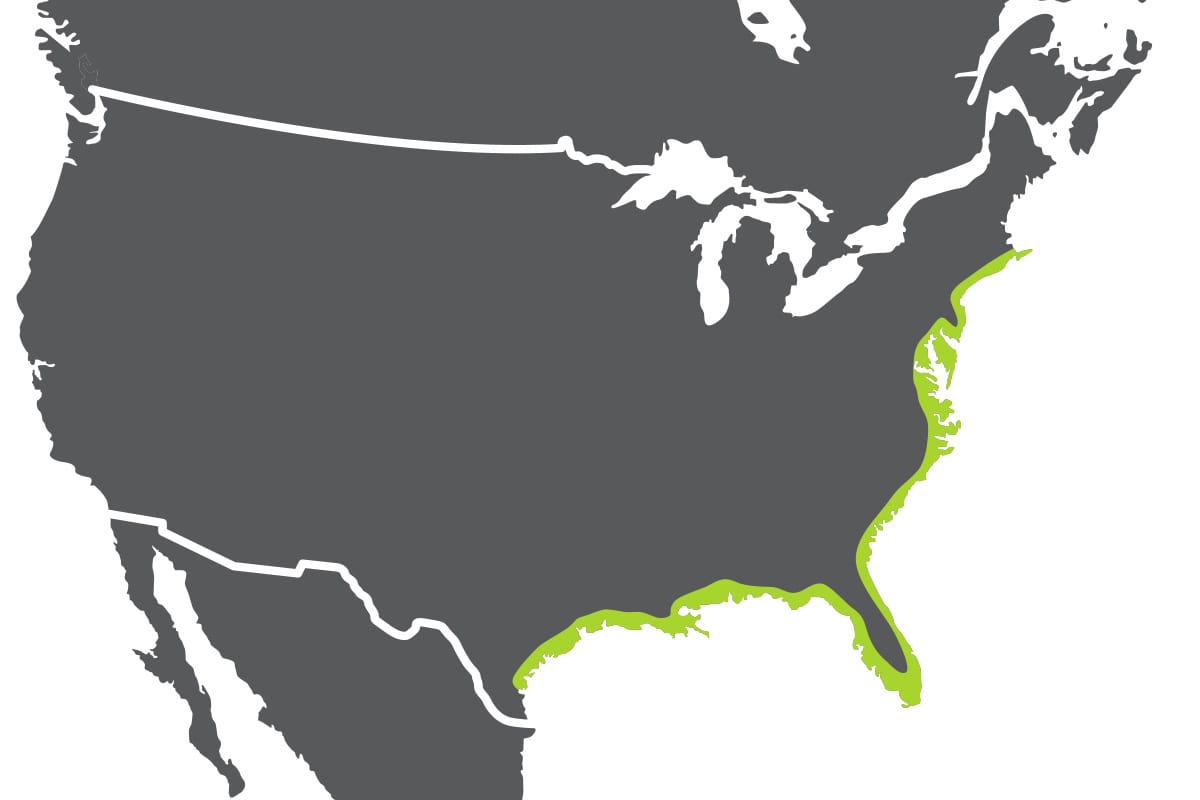
Recommended Housing And Accessories
Diamondback terrapins require brackish (somewhat salty) water to mimic their natural habitat where rivers meet seawater. Their tank should be deep enough to swim and dive in comfortably, with a water depth that is at least 3 times as deep as the length of their shell. Aim for a 75-gallon tank or larger, such as the Aqueon Standard Glass Terrarium.
Use a good filter like the Aqueon Quietflow® Canister Filter 400 to maintain water quality and prevent unfavorable skin and shell conditions. Water care products like Zilla Water Conditioner, Zilla Miracle Ball, and Zilla PURE help maintain safe and healthy water while significantly reducing time spent on upkeep.
Turtles need to bask in order to warm up and regulate their metabolism. Provide a dry, warm basking surface like a rock or accessories such as the Zilla Freestanding Floating Basking Platform or Zilla Basking Platform Ramp. You can enrich their environment by providing hiding spots with caves or plants to reduce stress, as well as offering floating objects or toys for mental stimulation.
For substrate, crushed coral is recommended as diamondback terrapins like to bite at the coral. This provides a source of calcium for them and helps natural wear on their beaks.
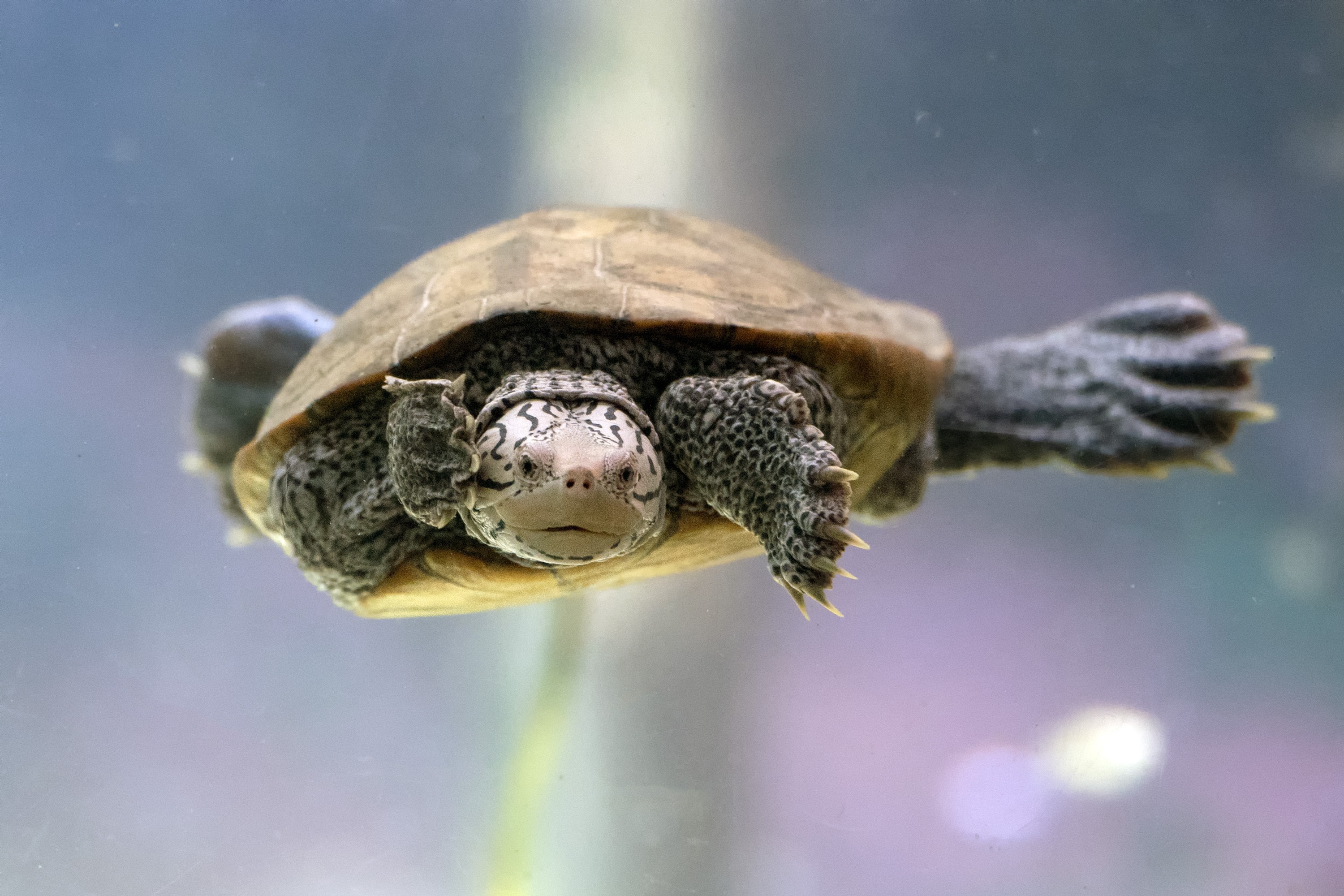
Temperature and Lighting
Maintain water temperature for diamondback terrapins around 70˚F. During the day, use heating lights such as the Zilla Canopy Series Fluorescent UVB/UVA Bulbs inside a Zilla Premium Reflector Dome to project adequate heat. At night, you can use a heat emitter like the Zilla Heat Projector to keep your turtle warm without disturbing their sleep.
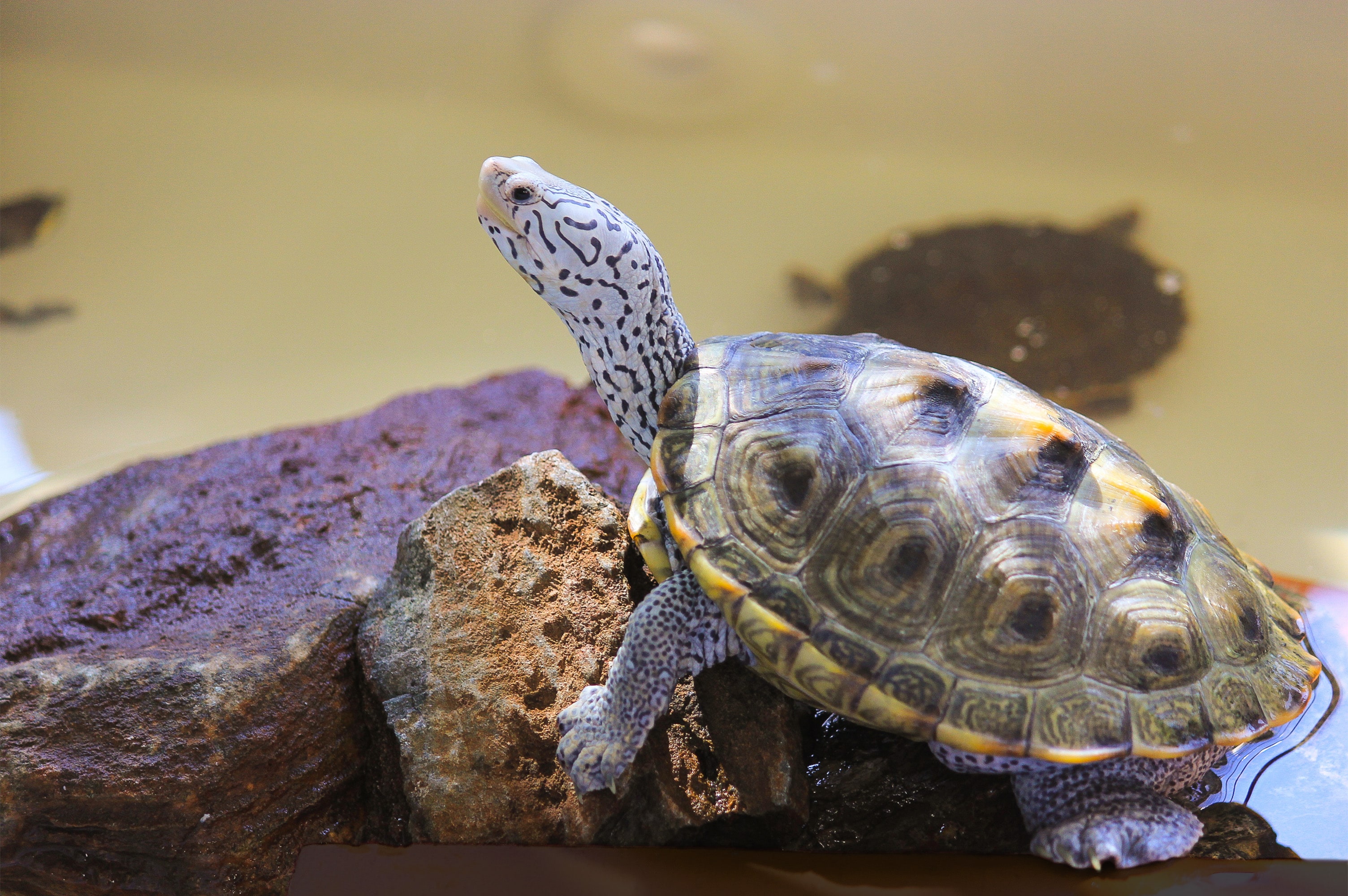
Feeding and Diet
Unlike most aquatic turtles, diamondback terrapins primarily eat meat. In captivity, you can feed them a mix of turtle pellets, dried shrimp, and other seafood once a day, every other day. Food and treats that will float in their tank can be stimulating for them, such as Zilla River Shrimp, Turtle Chasers, or Zilla Turtle Sticks for a well-rounded diet.
They are messy eaters, so be ready to clean promptly once they are finished eating to avoid bacteria and other buildup. Check the Zilla Feeding Guide for a list of appropriate food options.
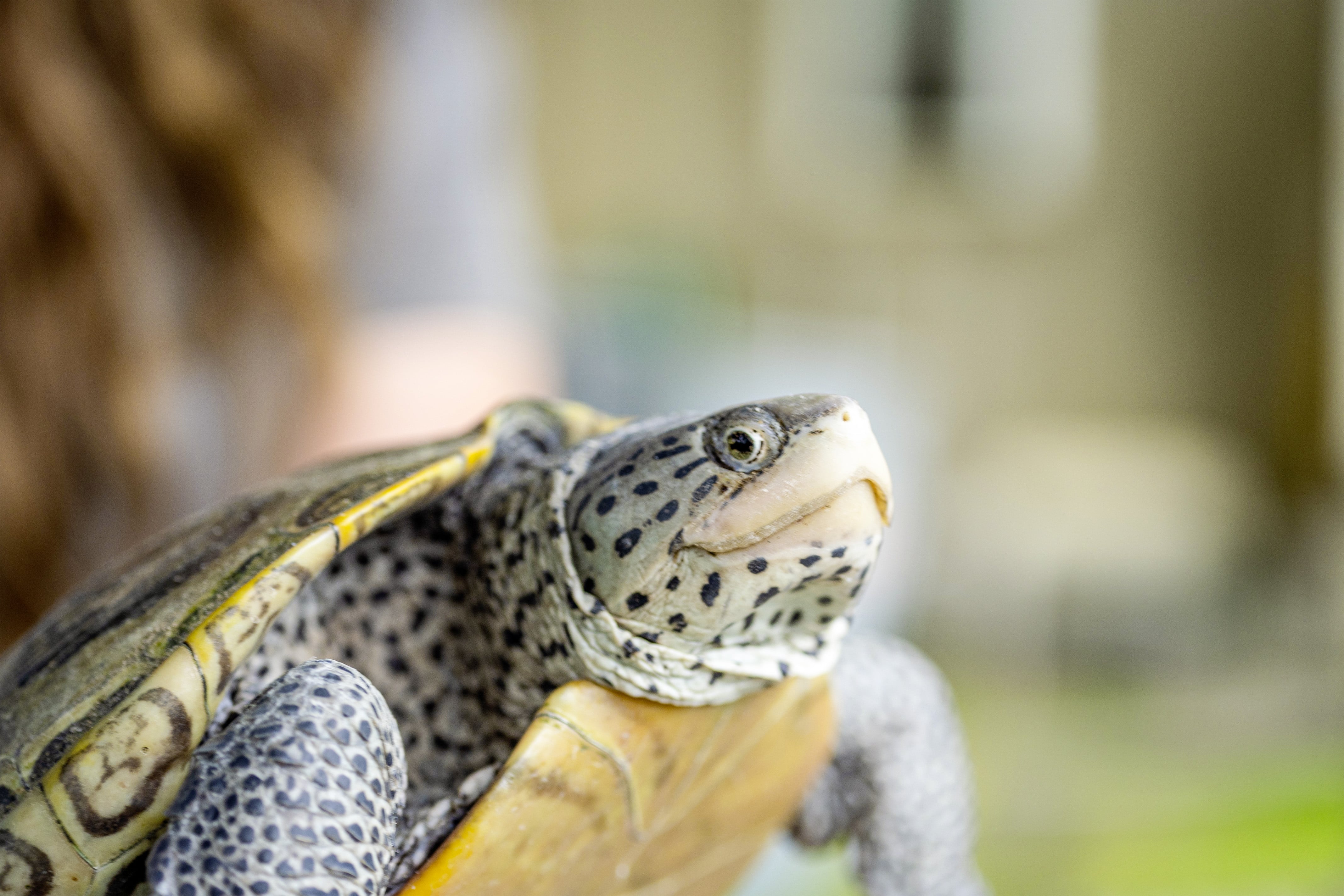
![]()
Handling
Diamondback terrapins are generally docile creatures. They are usually willing to be handled but may bite if they feel threatened. Approach them gently and handle them with care. Avoid sudden movements to minimize stress.
